How Had I Never Seen... "Girlfriends"?
 Thursday, May 27, 2021 at 12:12AM
Thursday, May 27, 2021 at 12:12AM 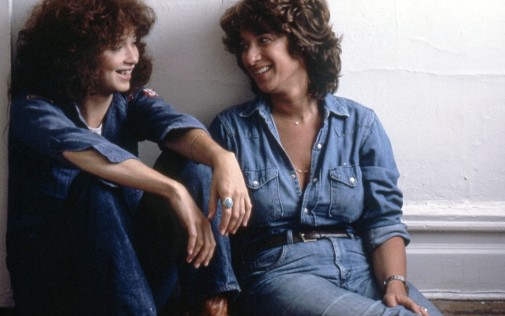
This month, the Criterion Channel added Claudia Weill's 1978 debut feature Girlfriends to their roster. Since last year, the film has been part of the collection, but it's now available for streaming. Coincidentally, I've also recently purchased the European edition of the Blu-Ray. Taking this into account, as well as the fact that I've been hearing and reading wonderful things about this flick for ages, it seems like a good time to finally watch Girlfriends and share my first impressions with you, dear readers…
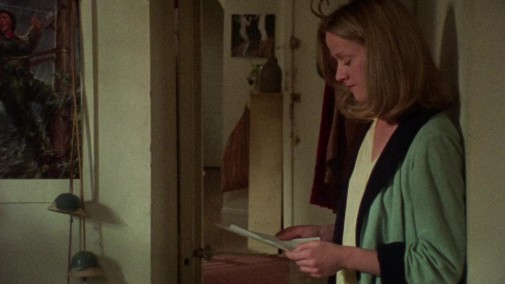
Early on in Girlfriends, one of the two titular women, Anne (Anita Skinner), recites a poem to her roommate, Susan (Melanie Mayron). It's a work in progress about a daughter's strenuous relationship with her mother, a dynamic that the verse equates to war, more volatile and far more long-lasting than any bellicose conflict has ever been. After listening to her friend's wordsmithery experiments, Susan asks her if she ever fought with her mother. There's a hint of reproachful doubt in her tone, almost as if questioning the realness of the poem—Anne answers in the negative, confirming whatever implicit suspicions had been left loudly unsaid.
Writing about Claudia Weills' film made me feel a bit like that. Like a poet writing about things about which they have no experience. After all, this is a major work many great thinkers have examined through the prism of feminine representation, women's friendship, the New York art scene, and the specificities of 1970s second-wave feminism. I'm a Portuguese cis-male, have only visited New York once as a tourist in 2008, and have certainly never experienced the exact trials and tribulations of the time and place portrayed in the flick. In many regards, it feels wrong to share my perspective on a work of art whose putative authenticity is at the center of so much of its critical celebration.
However, even as I acknowledge that my opinion on Girlfriends might not be of great value to anyone, I feel compelled to express it. If nothing else, because Weill's film moved me deeply, illuminating thoughts and ruminations I didn't even realize were brewing in my mind until I saw them expanded on the screen. When art can have such an impact on the viewer, it's essential to share the experience. At least, that's how I've grown accustomed to thinking about the matter. While far removed from the realities of Susan and Anne, distant from the ideal audience Weills might have imagined, Girlfriends left me saturated with cinematic love.
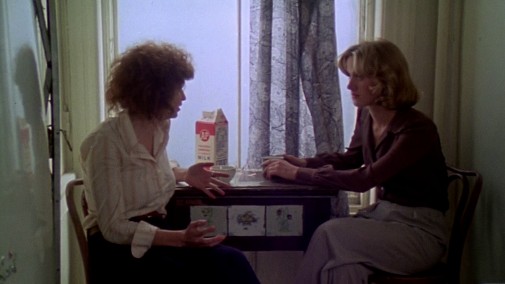
From a strictly formalistic and structural purview, the film's an unassuming gem of disarming simplicity. While a great deal of the narrative revolves around Susan's ambitions as a professional photographer, there's little refinement to the movie's visuals. Natural light dominates Fred Murphy's cinematography, as do slightly out-of-focus images that often privilege the surrounding city instead of the characters. In many ways, this results in an aesthetic shabbiness that's regularly jolted out of its desaturated slumber by slashes of sanguine red – a wall, a blouse, ruby lips. The editing, the inchoate rhythm of life, is the star, not the lensing.
Suzanne Pettit tightens the scenes which have been written by Weill and Vicki Polon with laser-focused precision. As much as Girlfriends might have gone to inspire the mumblecore of the aughts and legions of amorphous American indies, there's incredible sharpness to the observations herein presented. Usually short and sweet, the scenes move at a brisk pace, often omitting months, sometimes years, of development within the space of an unremarkable cut. The technique makes a movie where not much happens into the antithesis of boring. It also conveys an epic scope to the casual proceedings. Even though Girlfriends is only 87 minutes long, one feels as if they've seen a comprehensive snapshot of interwoven lives. Thus, the film manifests, not so much as a commonplace drama, but as urban existence and youthful malaise synthesized in celluloid.
Such grand language would appear inadequate to describe such a small production were it not for Girlfriends' overwhelming generosity, its epic humanity. Every person who appears in front of the camera has a story to tell, be it a disruptive new roommate or a forgettable paramour. For the most part, Claudia Weill allows them to express themselves. As for the societal pressures and oppressions that define much of the character's struggles, they are not didactically showcased. Instead, the director weaves them into each individual's experience, organically incorporating the issues in the characters' complicated lives.
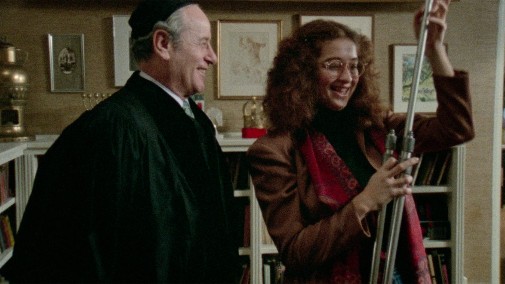
There's a painful sequence of events regarding a rabbi Susan works with that took my breath away, both because of its storytelling economy and the relentless sentiments it uncovers. Eli Wallach and Melanie Mayron act the scenes with immense gentility, tenderly delineating the boundaries of their relationship, what forces shape it, and the cost of disappointment. Of course, the picture's central and most complex relationship is between Mayron's Susan and Anita Skinner's Anne, two artists who navigate their lives in a state of constant negotiation, compromise, and bittersweet self-reflection.
For Anne, whose wedding happens in Girlfriends' first act, this mainly manifests in her juggling of career and traditional domesticity. She's not persuaded or forced into matrimony and does seem happy in her new married life, but that doesn't mean she lives without the plague of doubt, the sickness of dissatisfaction. On the one hand, she's found security, emotional, financial, even geographical. On the other, time is slipping through her fingers, her vocation left behind at a point in life when it seems like everything is moving too fast and somehow not moving at all simultaneously.
Not that the answer is an artist's path made up of easy isolation, either. Susan, the actual lead of the film and an element of contrast in regards to Anne, isn't any more secure in her independent living. Like many of us, she expresses the need to be alone while also abhorring the ache of loneliness. Susan fears being left behind. As much as she wants to be her own person, there's also an invisible string pulling her towards the comfort of companionship, be it with friends or a romantic partner. Similarly, she seeks artistic freedom while also needing economic sustenance. The conflict of art and commerce is alluded to, but, as happens with all of the film's complex ideas, Weill need not underline her themes.
Without force, they reveal themselves to us, those who watch Girlfriends and either see ourselves or recognize another, equally beautiful, humanity in the celluloid dream. To be honest, the cineaste's effortless eloquence only makes me more frustrated at my unconcise rambling. Writing this a mere hours after watching Girlfriends for the first time, I find myself struggling to find the right words to explain its disarming nature, its incisive quality, its illustration of a young adult's growing pains. Throughout all this meandering reflection, I know one thing's for sure – Claudia Weill's Girlfriends isn't a film I'll soon forget. At least, now I understand why so many sing its praise and credit it as an inspiration. In its own unique manner, it's a bewitching picture.
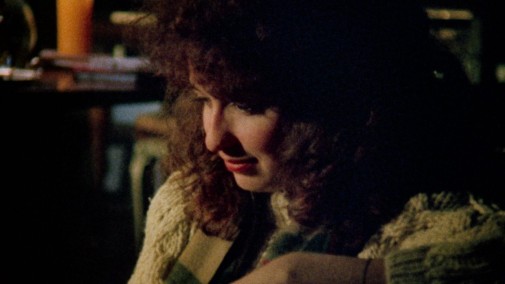



Reader Comments (5)
A good film, and most obviously an influence on FRANCES HA.
Cláudio, Girlfriends must also be contextualized within the framework of Jewish-American cinema of the late '70s and is ripe for comparison to other New York-set films like Hester Street (1975), Next Stop, Greenwich Village (1976), Annie Hall (1977), An Unmarried Woman (1978) and Manhattan (1979).
Saw it on TCM last month. Keeps coming to my mind. I was amazed by how ugly everything is on screen. The hair, the clothes, the apartments.
P.S. Don't miss Glenn Close discussing her wardrobe in Variety.
How Had I Never Seen... "Girlfriends"?
Because most people haven't.
Never seen "Girlfriends", not surprising, clearly you weren't reading Ms. Magazine in the 70's.
But seriously, I am glad this wonderful film has survived and is being shown on TCM. Women filmmakers were a very niche interest back then.